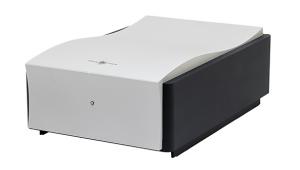Atc P1 (£1830)

Famous for its uncoloured, bomb-proof monitors beloved of recording engineers the world over, ATC builds not just speaker drive units but also the amplifier power packs for its active speakers in true artisan fashion in its Gloucestershire workshops, populating circuit boards entirely by hand. Similarly, the company’s standalone pre- and power amps are individually hand crafted, only the metal casework is bought in from an external supplier.
As mentioned on page 43, we reviewed the P1 and its partnering CA2 Mk2 preamp in March ’10. Since then the power amp has unfortunately crept up in price by some £250.
Both single-ended (RCA) and balanced (XLR) inputs are provided, under the bonnet the P1 employing the Class A/B MOSFET power pack which ATC uses in its chunky SIA2-150 integrated amplifier. It’s a dual-mono design with two 300VA transformers feeding individual power supplies for each channel. One thing you perhaps might not like about the P1 is that its power switch is located on the rear panel.
STARK CONTRAST
When I hear an ATC amplifier I’m constantly reminded of the sound (perhaps that should read the ‘no sound’) of its active monitors. Best described as clean, stark and uncluttered, it can first appear slightly underwhelming. But it grows on you the more you listen in, as you begin to appreciate that it’s what is missing – the lack of ‘mechanical’ boom ’n’ tizz – that makes it so delightfully revealing of detail and sound textures.
So it is with the P1, 2L Records’ hi-res recording of Mozart’s violin concerto sounding crisp and sharply-etched yet, conversely, mellifluous and easy on the ear – ideally balanced so that it sounded simply ‘right’. Robert Plant’s ‘Silver Rider’ possessed a particularly dark background as the ethereal guitar introduction resonated in its halo of reverberation. Only the massive Parasound and Anthem amps demonstrated better grip in differentiating between bass guitar and kick-drum in the dense production of the recording later in this song, or stately composure when recreating the scale and complex texture of the orchestra at full throttle in ‘Ride Of The Valkyries’.
Originally published in the November 2011 issue
























































